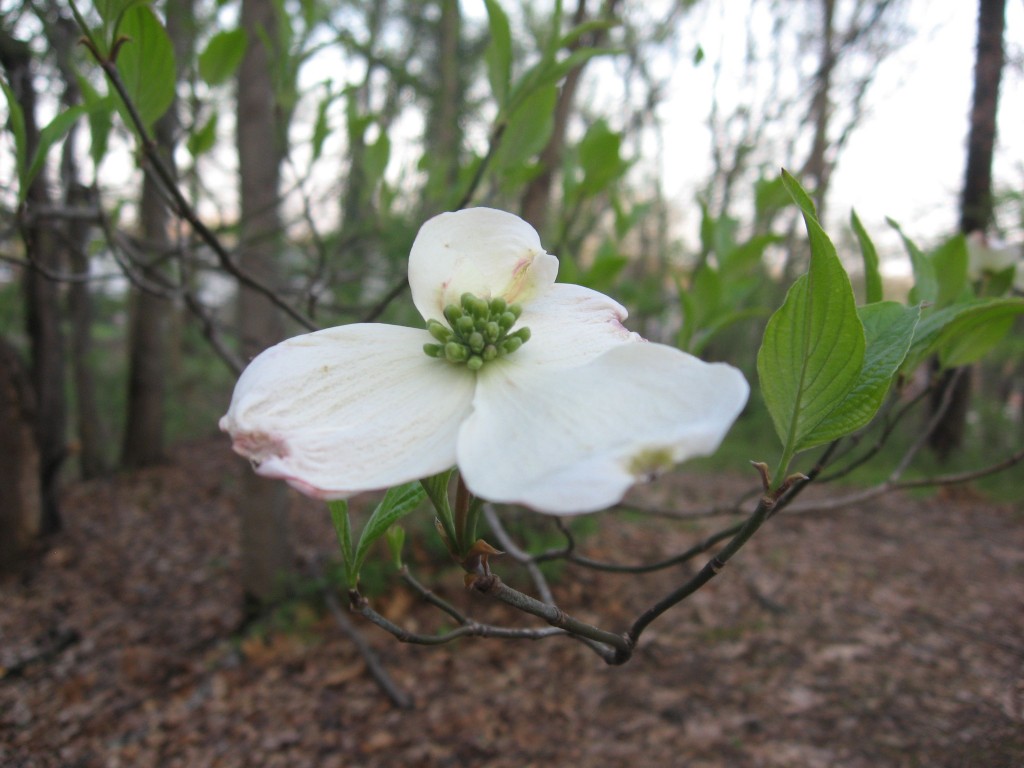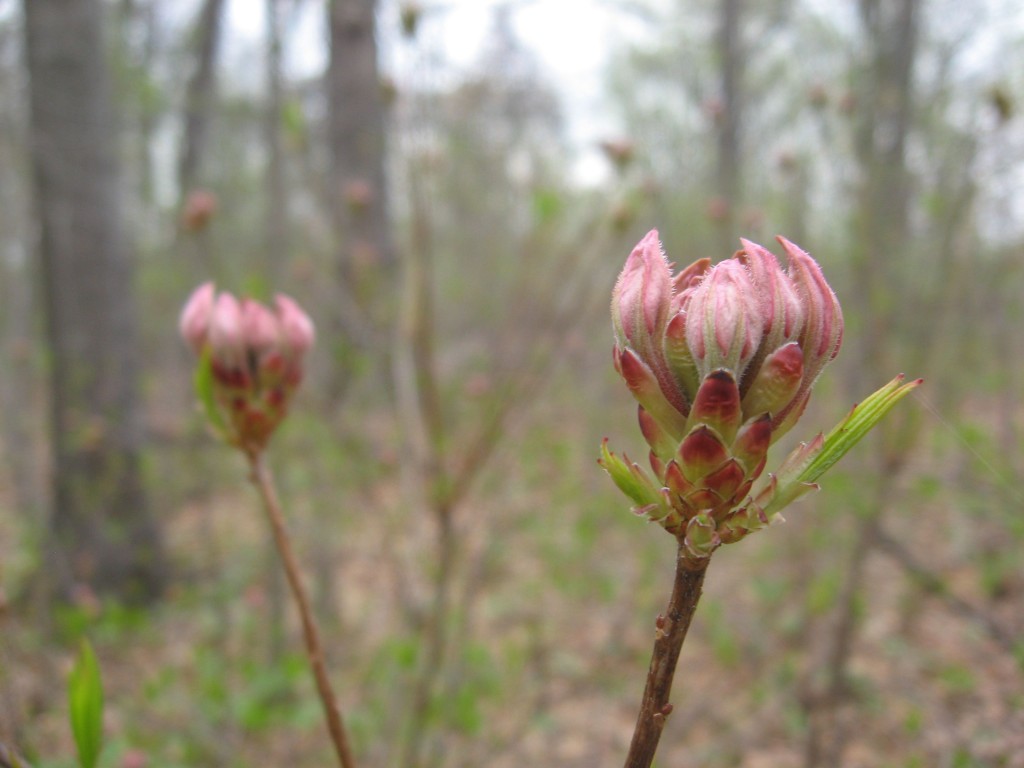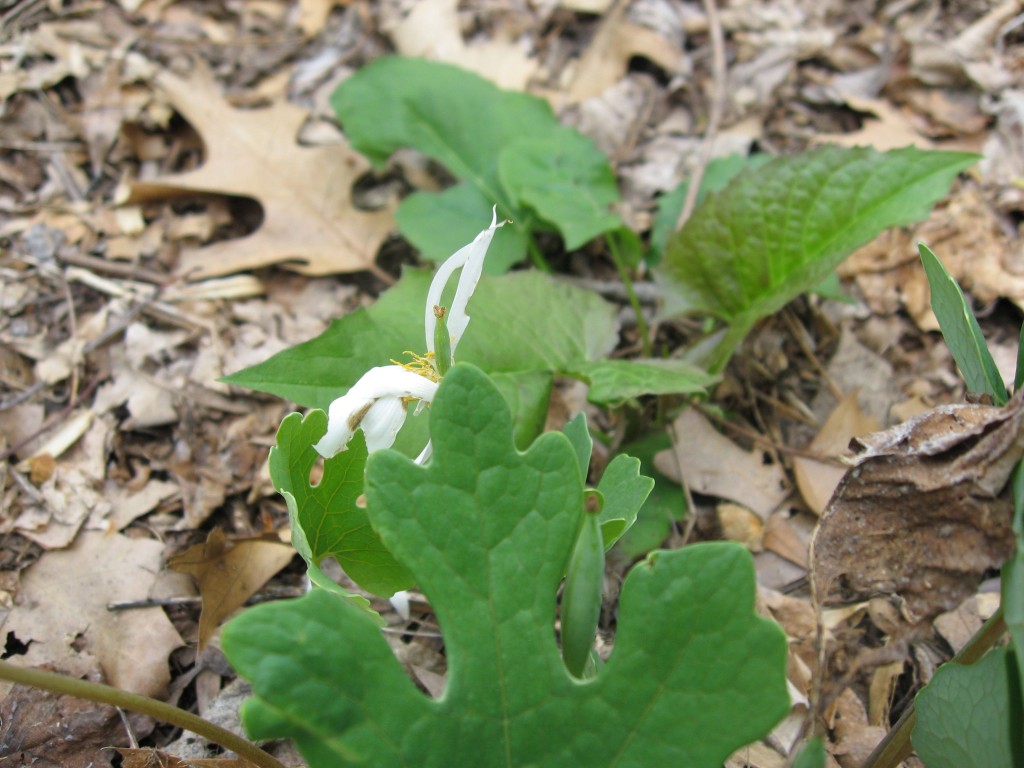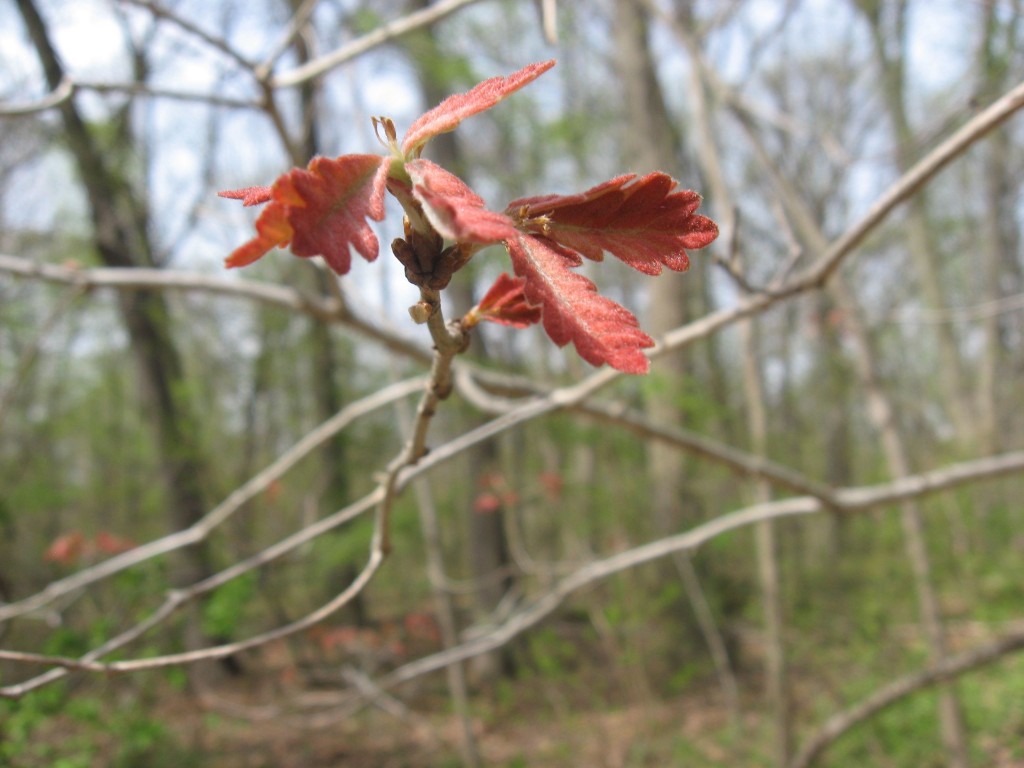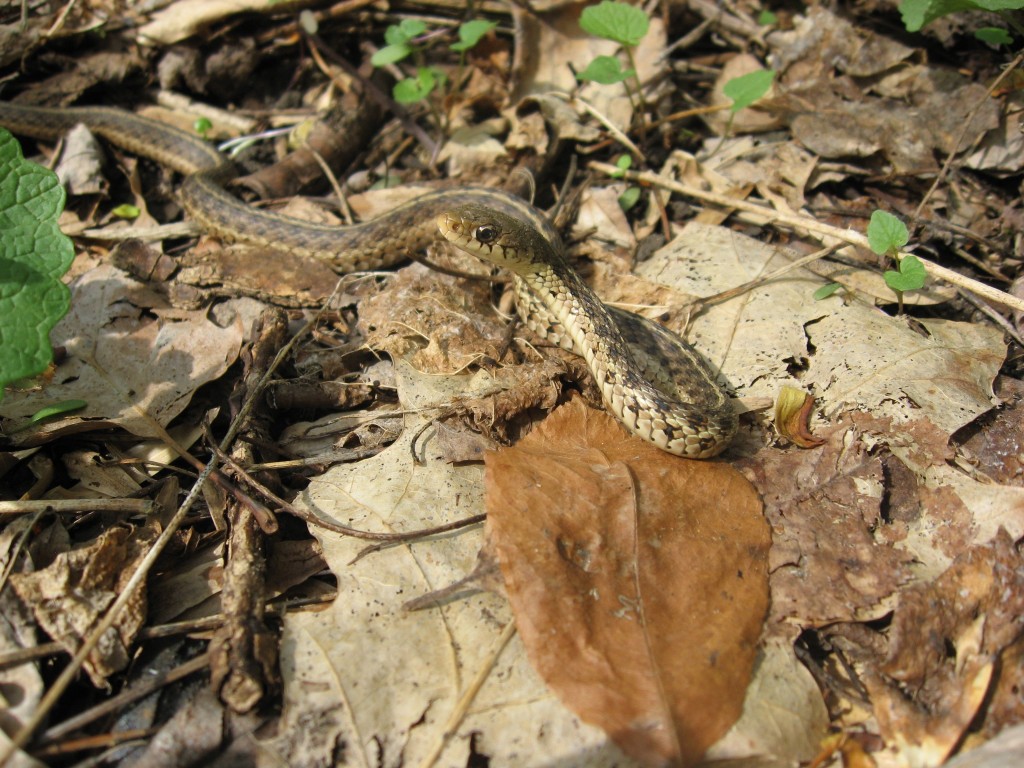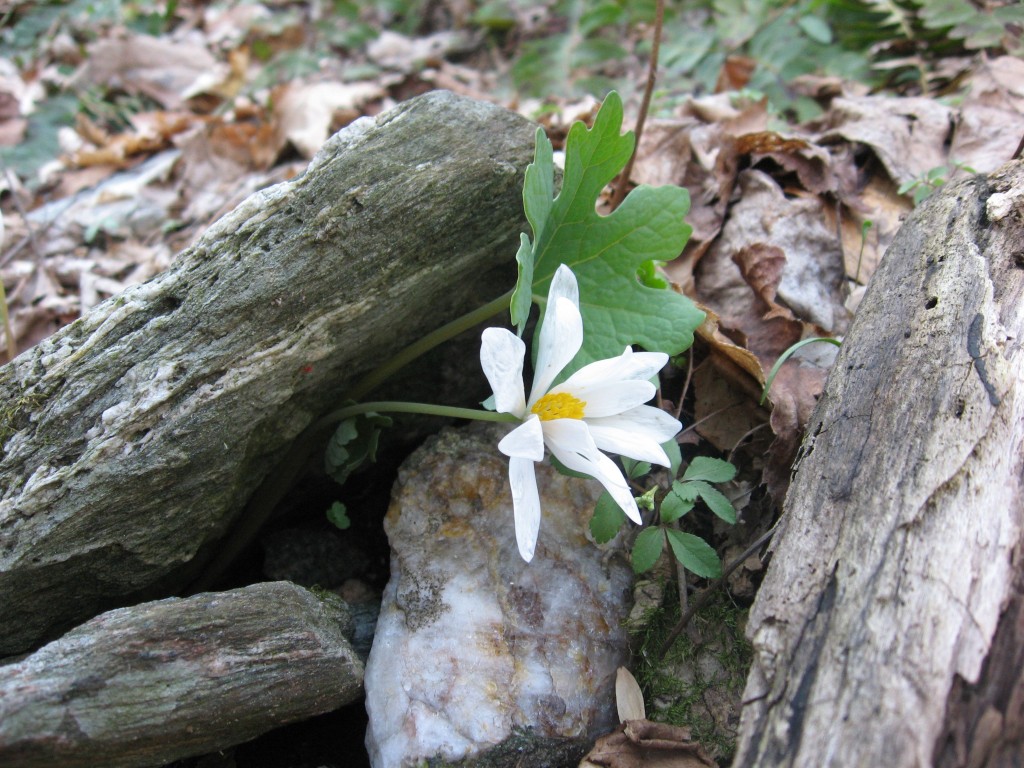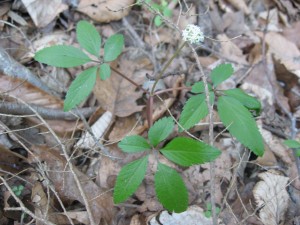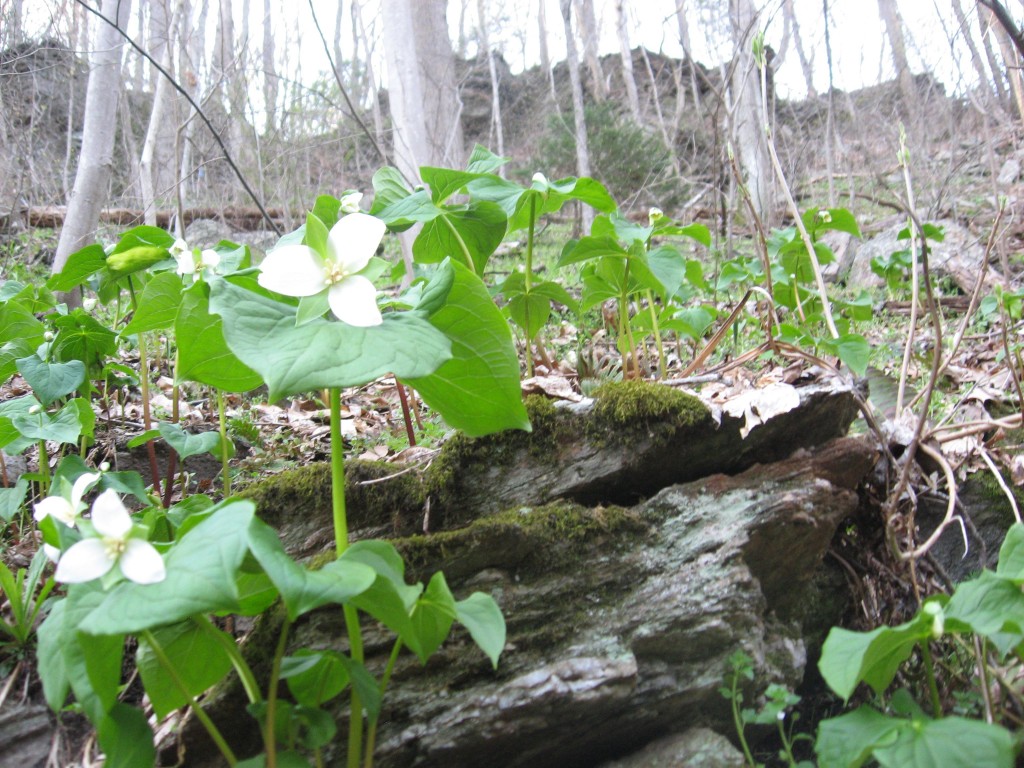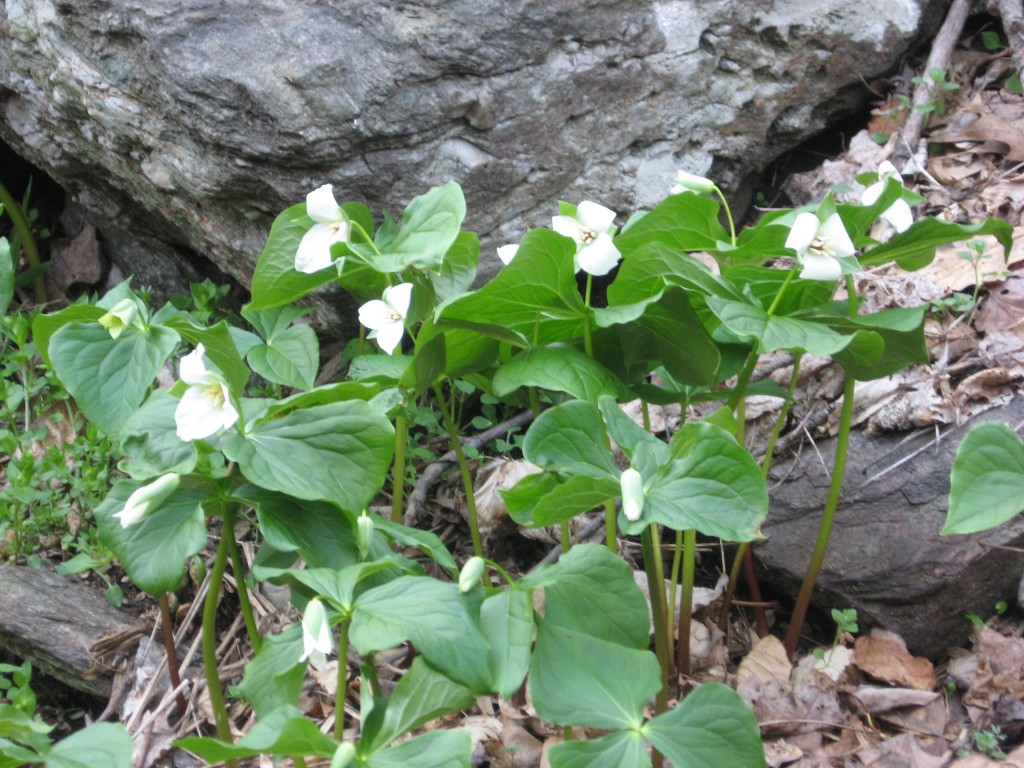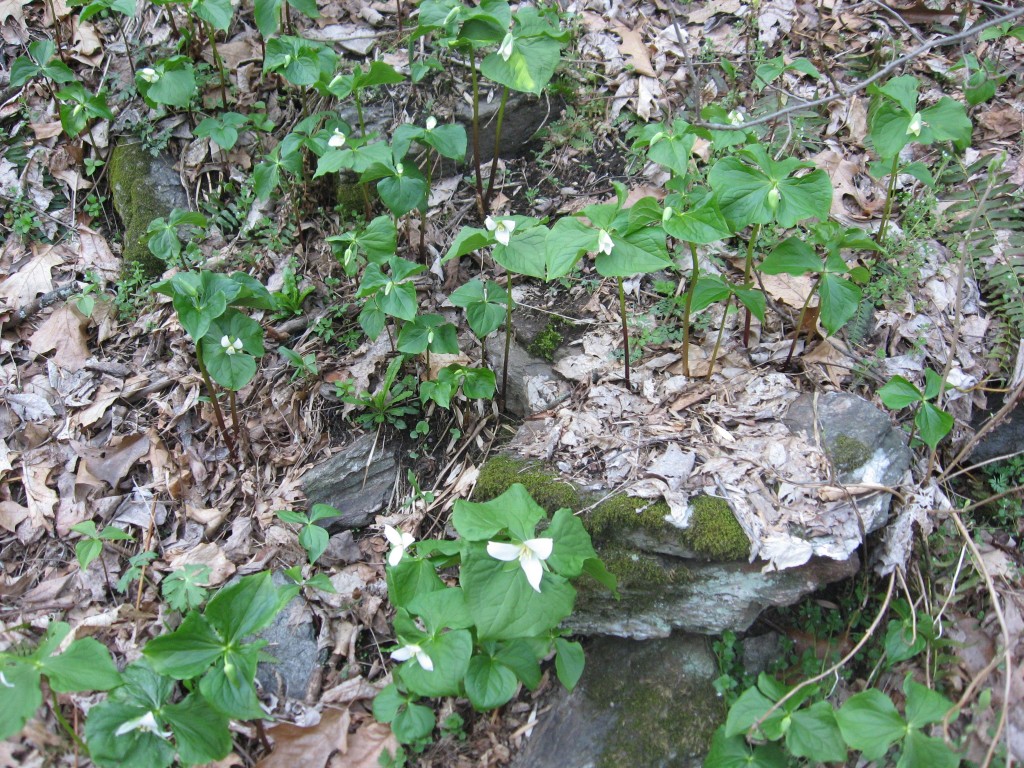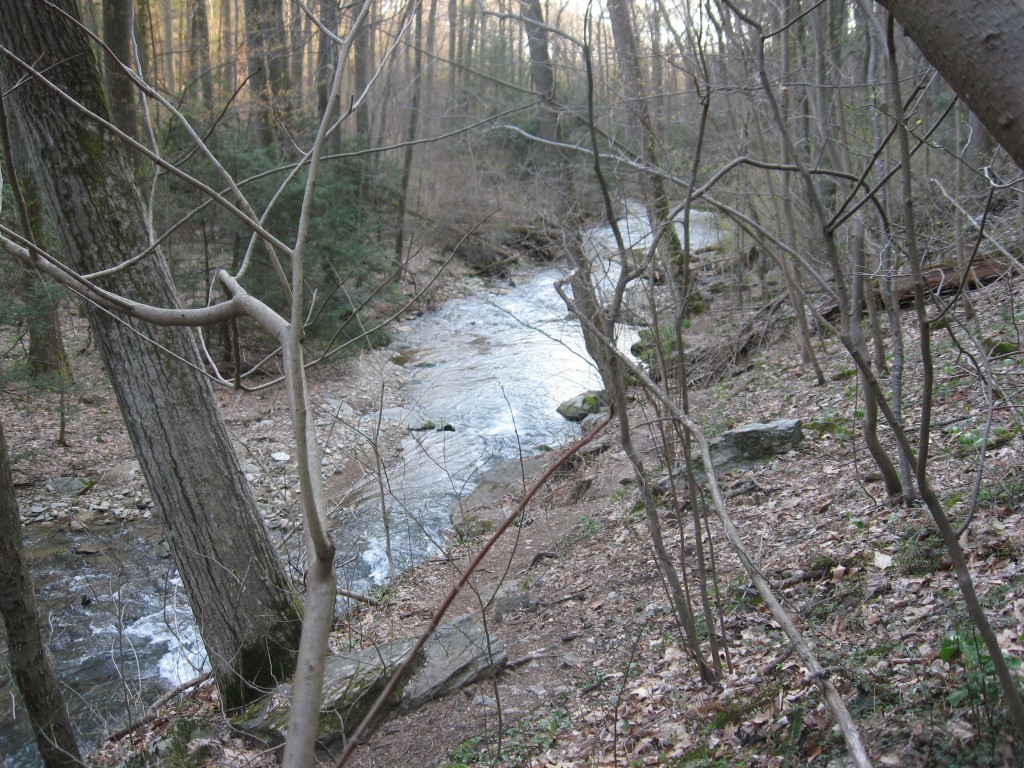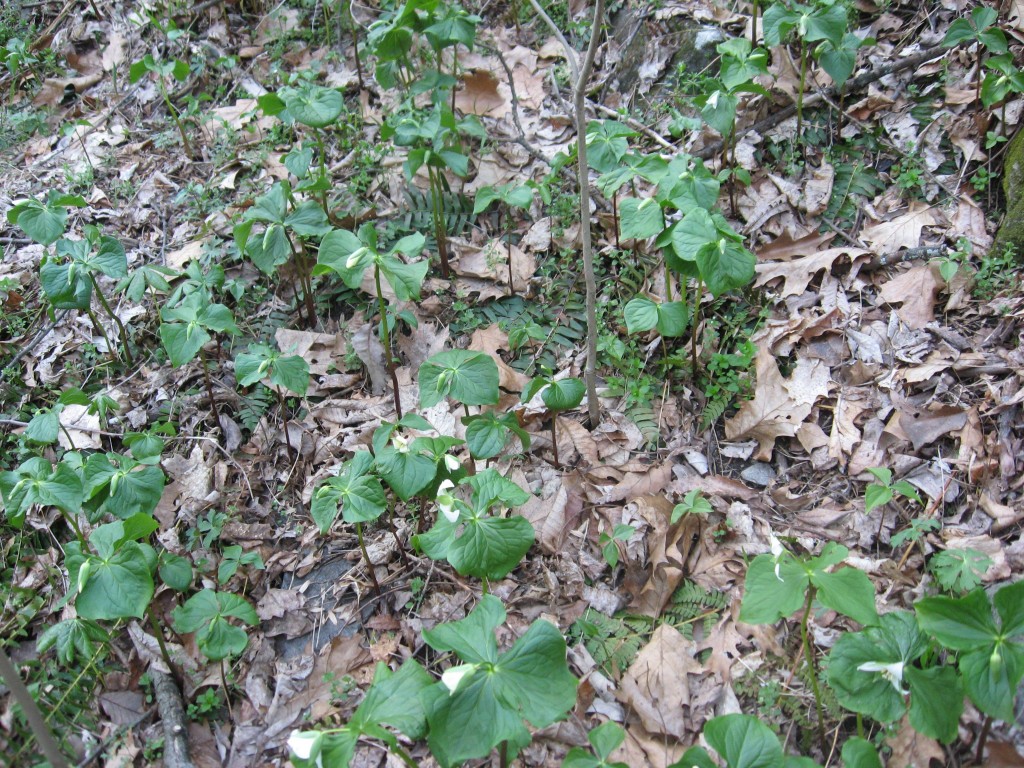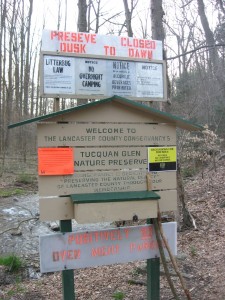THE SANGUINE ROOT VISITS THE BLUEBELL PLACE, A RICH FLOODPLAIN ALONG THE SCHUYLKILL RIVER IN VALLEY FORGE PARK. Â IF YOU LIKE BLUEBELLS, THIS POST IS FOR YOU!
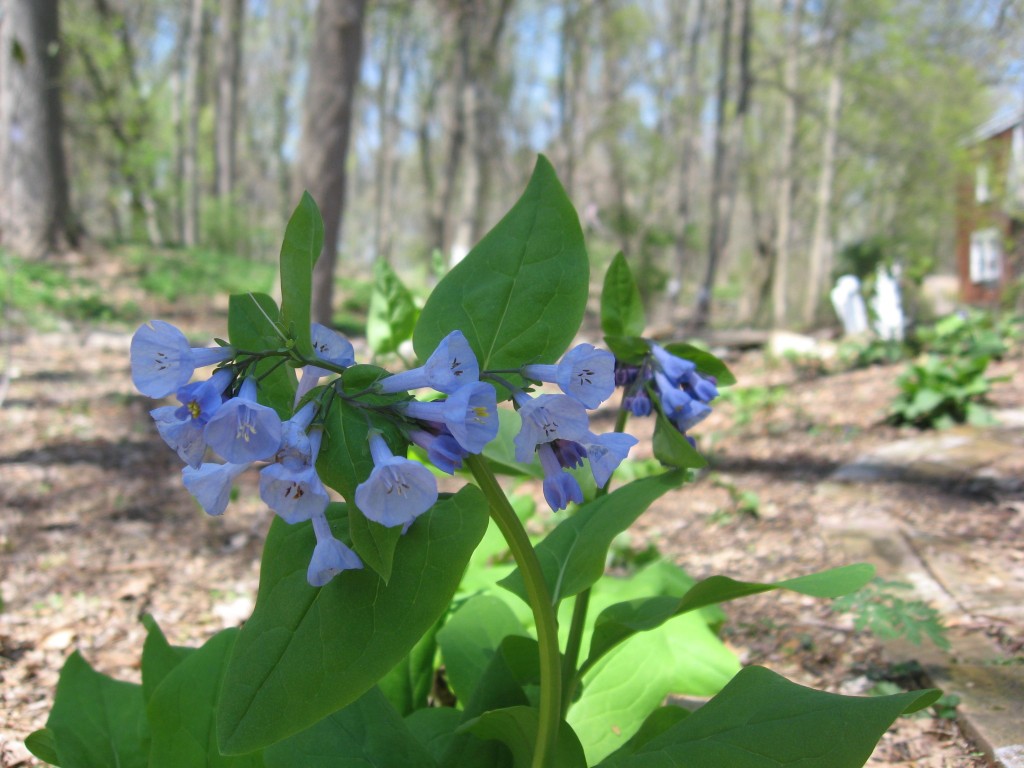
Isabelle talked about this place somewhere along the Schuylkill River that had Bluebells covering whole areas for miles on end. Sean wanted to know the exact location but Isabelle could not remember. “it was near the bicycle paths” Â “north of the city” Â “its a bicycle trip- we need bicycles.”
The Bluebell place was talked about for at least a year. Â Sean had never even seen a real Bluebell or least have been aware of its importance. We bought a bluebell plant, and its delicate green leaves grew and sat there , went dormant and the next spring they came up again. The next year they bloomed and there was the most beautiful blue flower.
The picture above is our yard, not the Bluebell place. However, it was taken just hours before our visit to the Bluebell Place.A native flower, with the most sublime blue, that looks good in any light. In the shade, the blue color has an opalescent, opaque quality that contrasts with its ethereal, transparent blue color in full sun. The blue of the shade or the early evening is like the blue pictured above. Â It has a richness and a fresh perspective on the color blue that invites a new analysis of the color. The flower captures the blue skies. The blue of the flower changes with the blue of the sky. Â In mid-day, the blue skies and the blue of Mertensia is a clear, crisp and bright blue, as if blue were in illuminated glass. In the evening, the blue of the sky mellows as the sun passes through so much more atmosphere, its light is filtered, and the subtleties of the its color are visible. The blue in the twilight is more earthbound, opaque, visceral.
The Bluebell  is the earth-bound sky plant.  Its young flowers are pink, like the twilight, and they mature into blue, become translucent in the afternoon, and mellow into a rich deep blue as the evening sets in.
Perhaps in an evolutionary sense the bluebell is attractive to its pollinating insects because of its mimicry of the sky. It does bloom in April, when there is plenty of rain and cloudy skies and when it is cloudy, the bluebells really stand out. They are attractive to us. We have noticed that flowers that we find beautiful are also very attractive to pollinating insects. So we and the insects have similar tastes. Â We like the same colors, shapes and seasons. Even the wallpaper in the Sanguine Root Welcome Center and Reading Room is blue.
So we decided to find the mythological Bluebell place.  We got out maps, looked on the internet and eventually we found a place that Isabelle exclaimed:  “Thats the spot. For real. This is the  path” It helped that Isabelle remembered that there was a bridge that crossed the river nearby. As it turns out, The bluebell place is part of Valley Forge Historical Park, and is right across the Schuylkill River from where George Washington and his troops spent some time during the Revolutionary War.
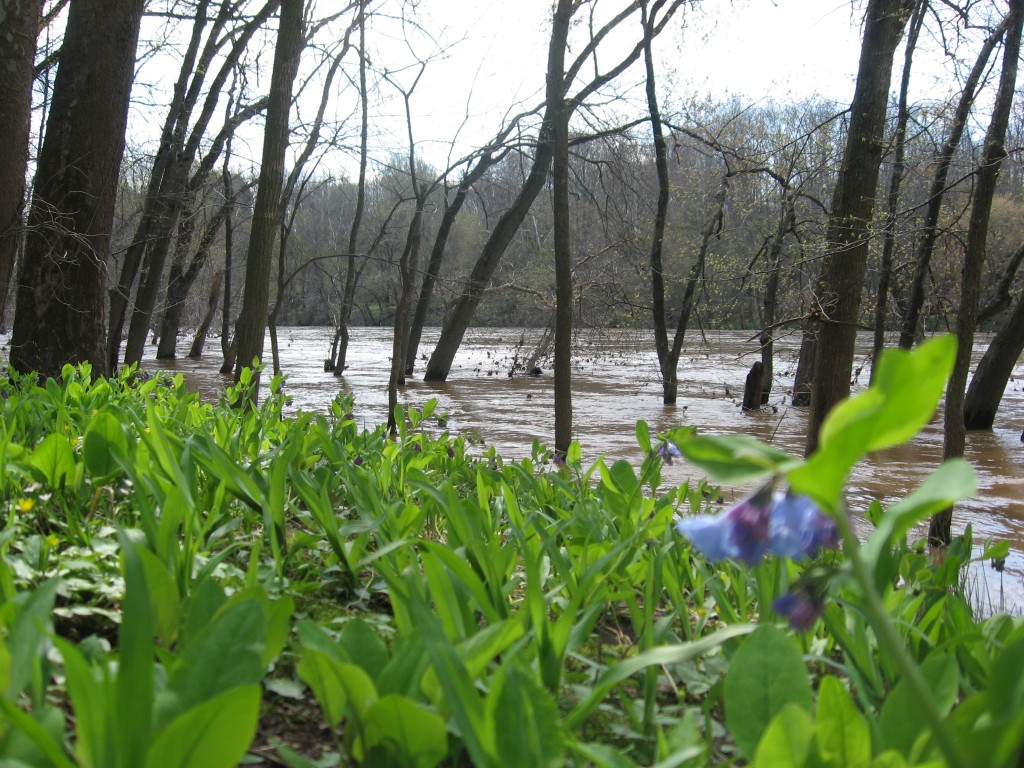
Only a half hour from Overbrook, West Philadelphia, is the Bluebell Place. Â There is a parking lot, and it is very easy to access from the Schuylkill expressway and rt 422. Â Before we knew it we were there. Â At the Bluebell Place, where Mertensia virginica grows in its natural habitat and has been for millenia.
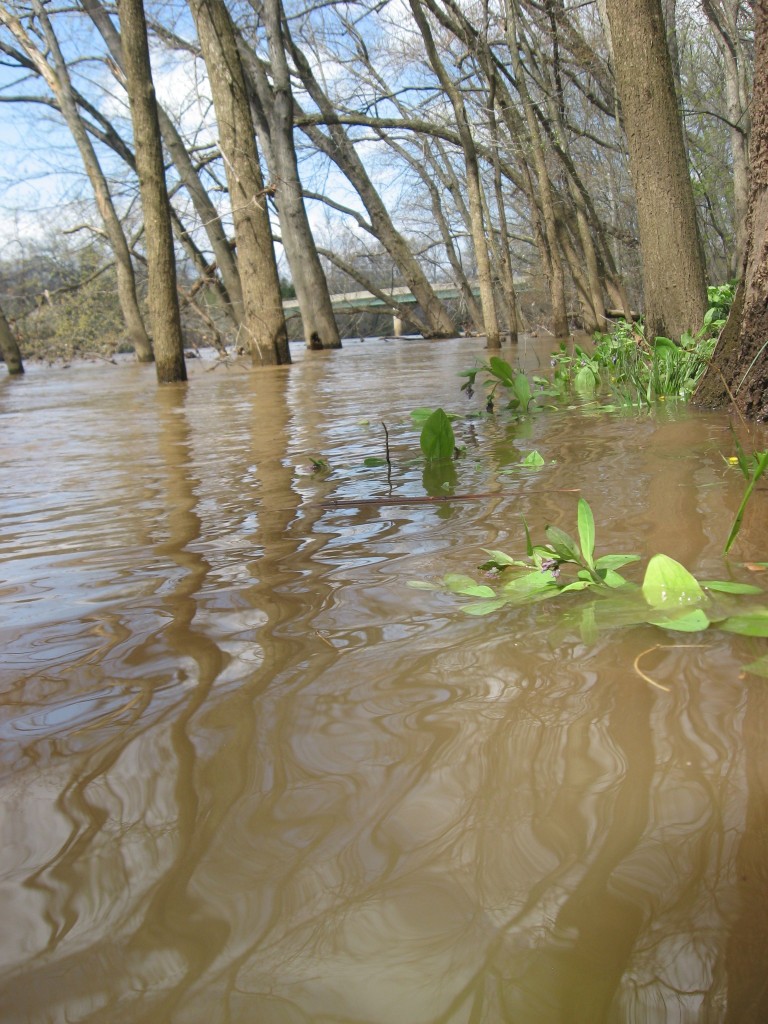
There was a significant spring rain event the day before, resulting in high waters and the flooding of some bluebell plants. Bluebells seem to not mind getting their feet wet, just like their next door neighbors, the Sycamore trees, (Platanus occidentalis).
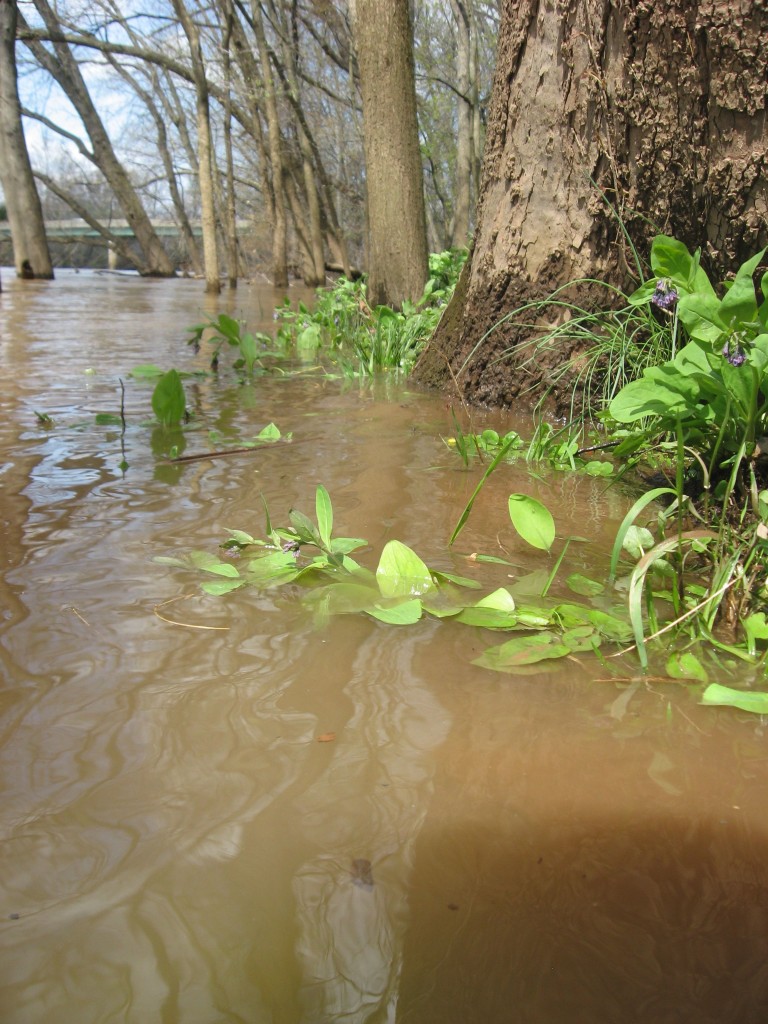
The flooded Schuylkill River with the Bluebells inundated amidst the Sycamores in Mid-April felt reassuring. This is a natural occurrence . The River was rushing, and was loud. The paths were flooded at certain points. There was an element of drama to the scene. Â Whole Bluebell flowers were submerged below the river.
Is the river supposed to be this muddy or is this a result of land mismanagement?  We are so skeptical  these days with all of the environmental problems that have been created.  We can never assume that what we see is truly a natural occurrence.  However, skepticism aside, the Schuylkill River is a beautiful one, it is our water source, it is our base and our valley.
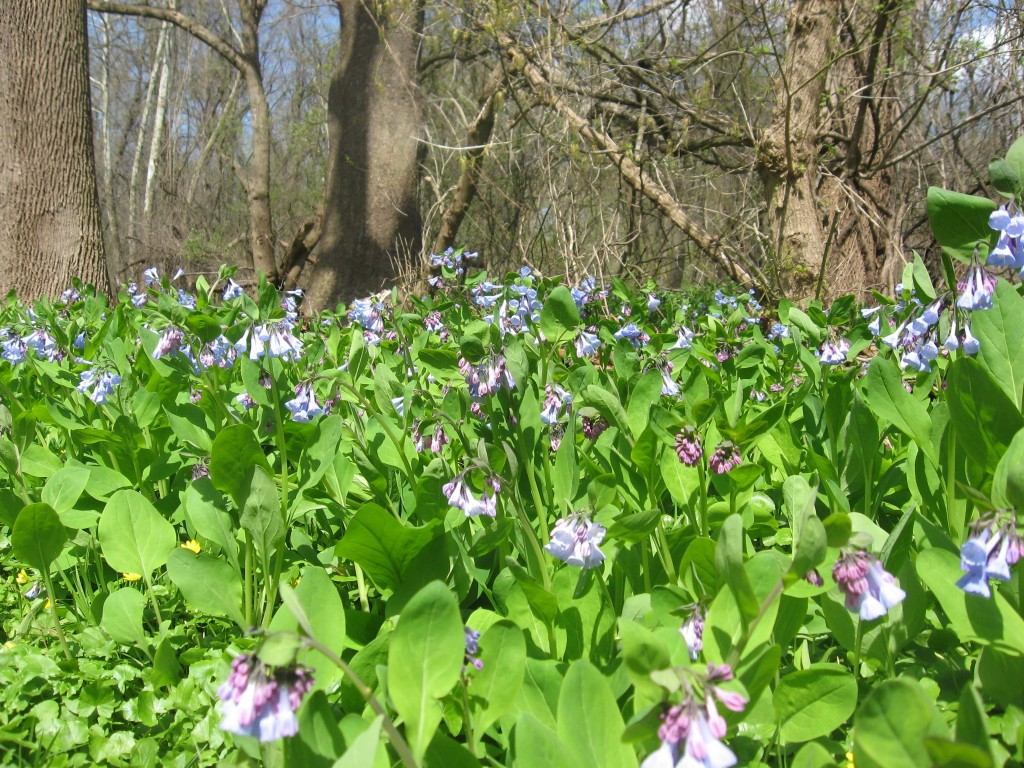
This is what we came here for. Â This is the Bluebell place.
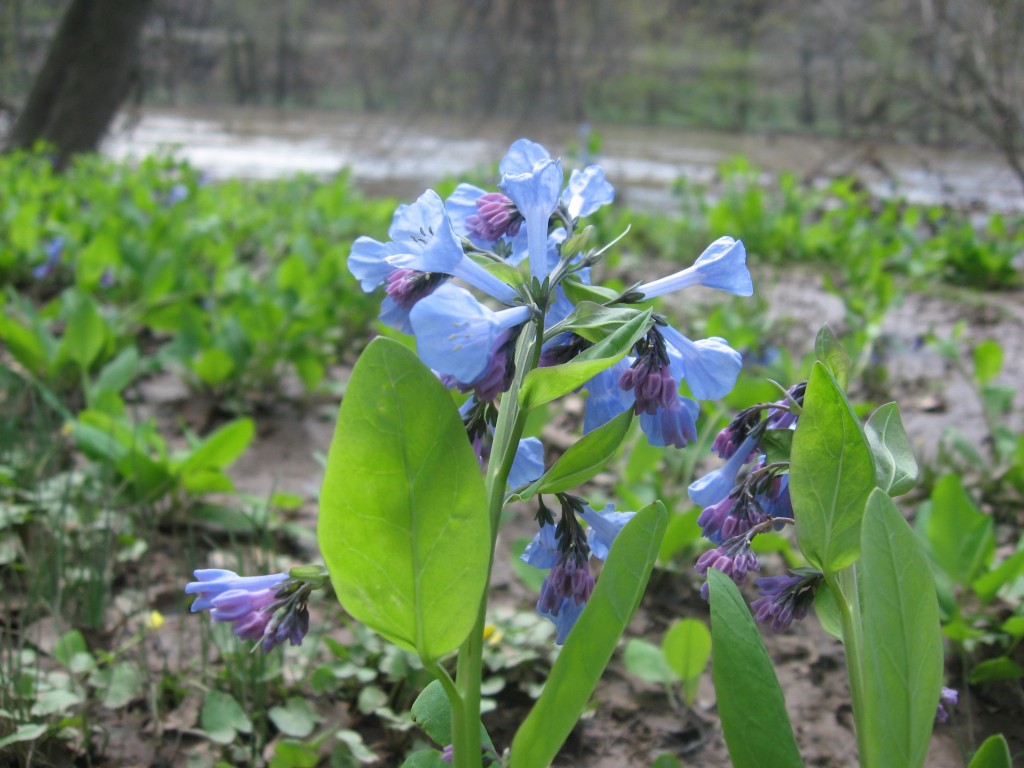
it is educational to see Bluebells growing where they have been growing for thousands, possibly millions of years. How many years does it take to create a species? When did Mertensia virginica begin growing right here in this spot? Â How old is the Schuylkill River?
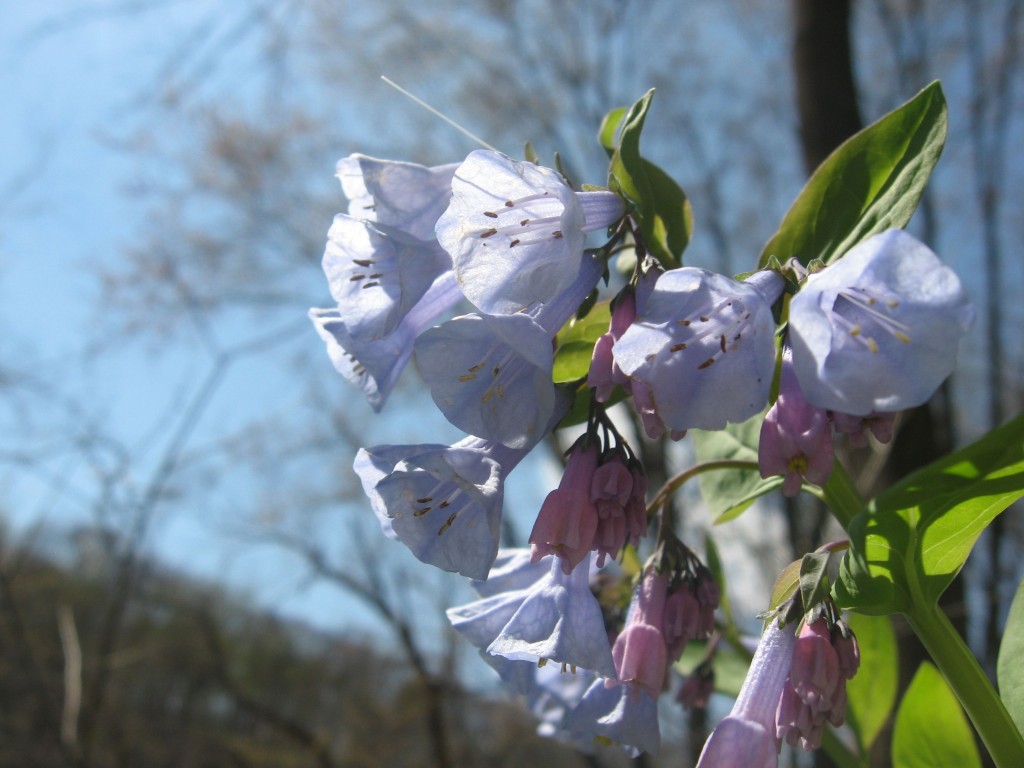
Here we bear witness to an ancient flower, a plant that has bloomed, created seeds, and has gone dormant each season for millions of years. As the rivers change course and flood out new areas and abandon other areas, the Bluebells have adjusted their habits accordingly. Just this day, we watched the Bluebells in action, saturated in a torrent of floodwaters, the future of each specimen is in question.
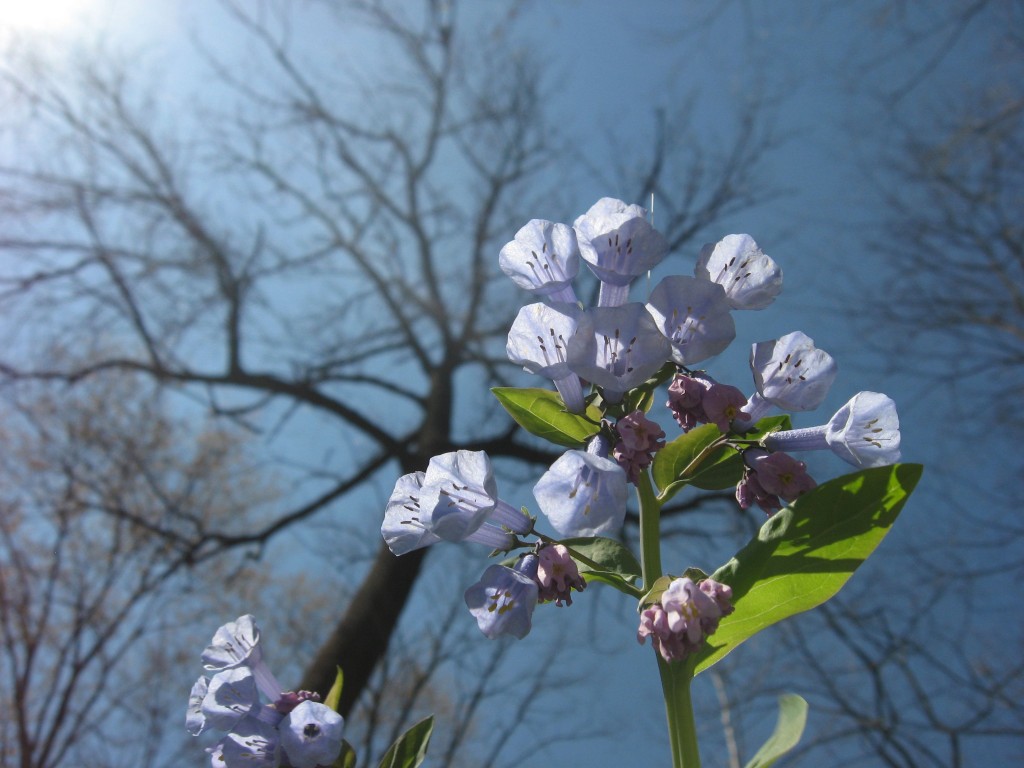
These wildflowers make Excellent garden specimens. They propagate easily  and look great when they are all together in a group.  They dont tolerate full sun and they go dormant with the onset of summer, so it is good to grow them with other plants so they don’t leave a hole in the garden.
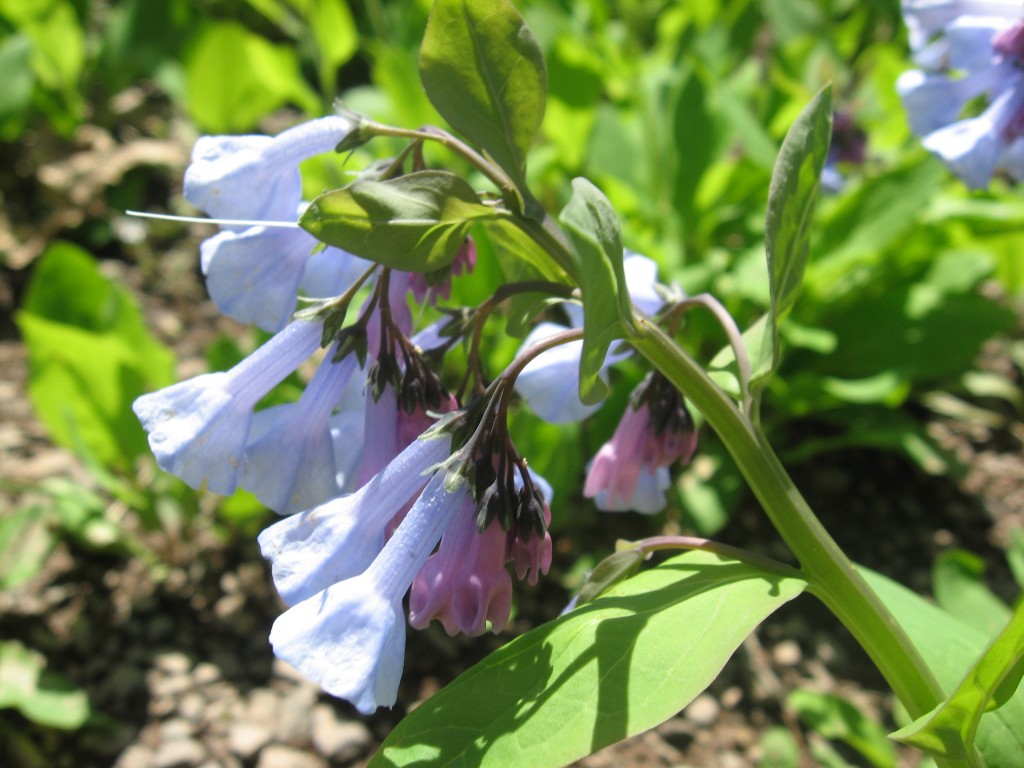
The flowers last a decent amount of time for each plant. The plants have a characteristic lean about them
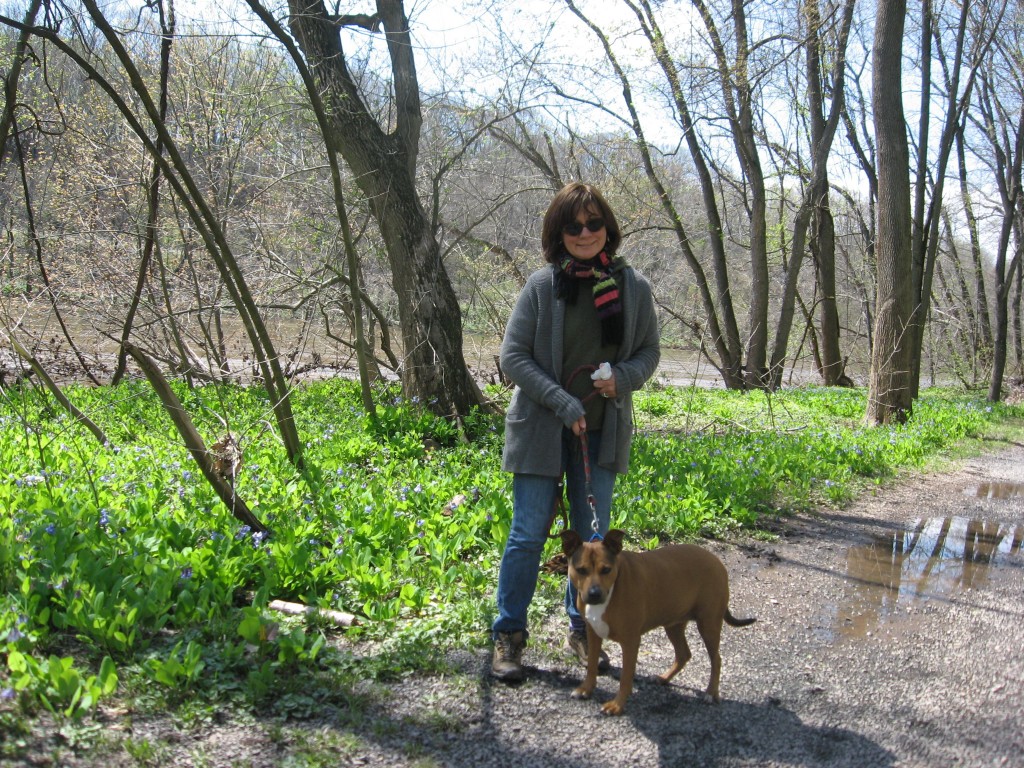
We brought Keeba. Isabelle clutches a bag in case Keeba has to use the facilities. We wouldnt want any fecal coliform bacteria to end up in our drinking water, which is picked up downstream, processed and piped to our houses, where we have filled the water bottles we are carrying this day. We also wouldnt want any bluebells or other wildflowers to be soiled by any dog waste, the flowers certainly do not deserve that treatment. Nor would we want anyone to step on any dog waste- wouldnt that be a bummer for any sunday afternoon stroll admiring the wildflowers?
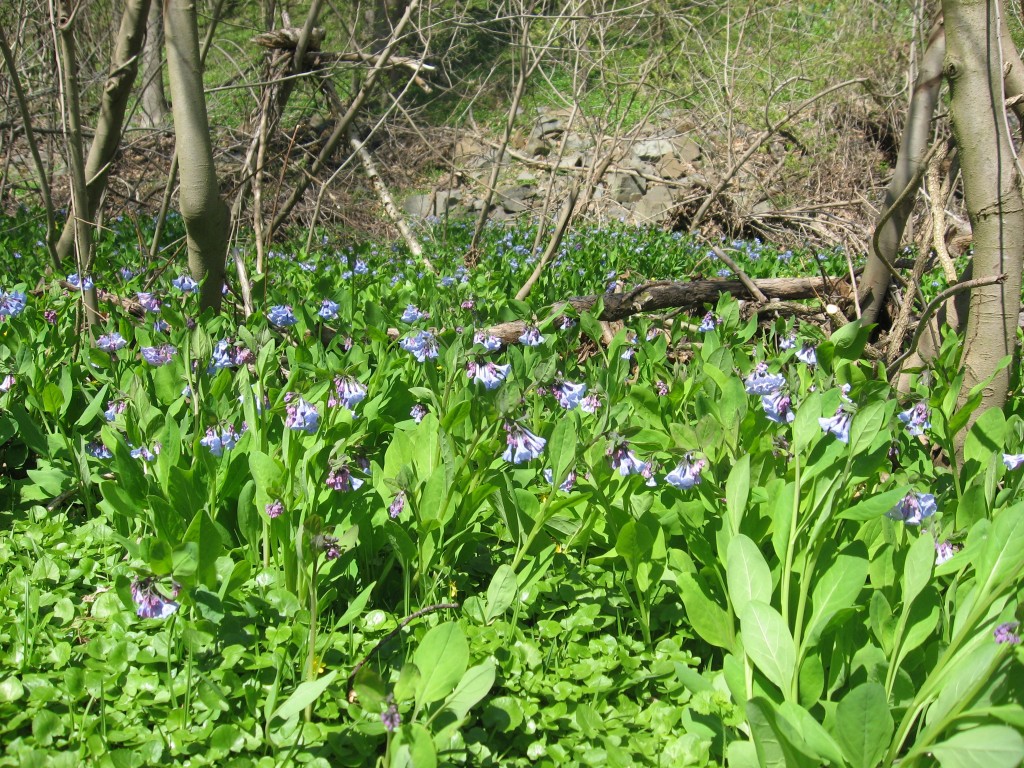
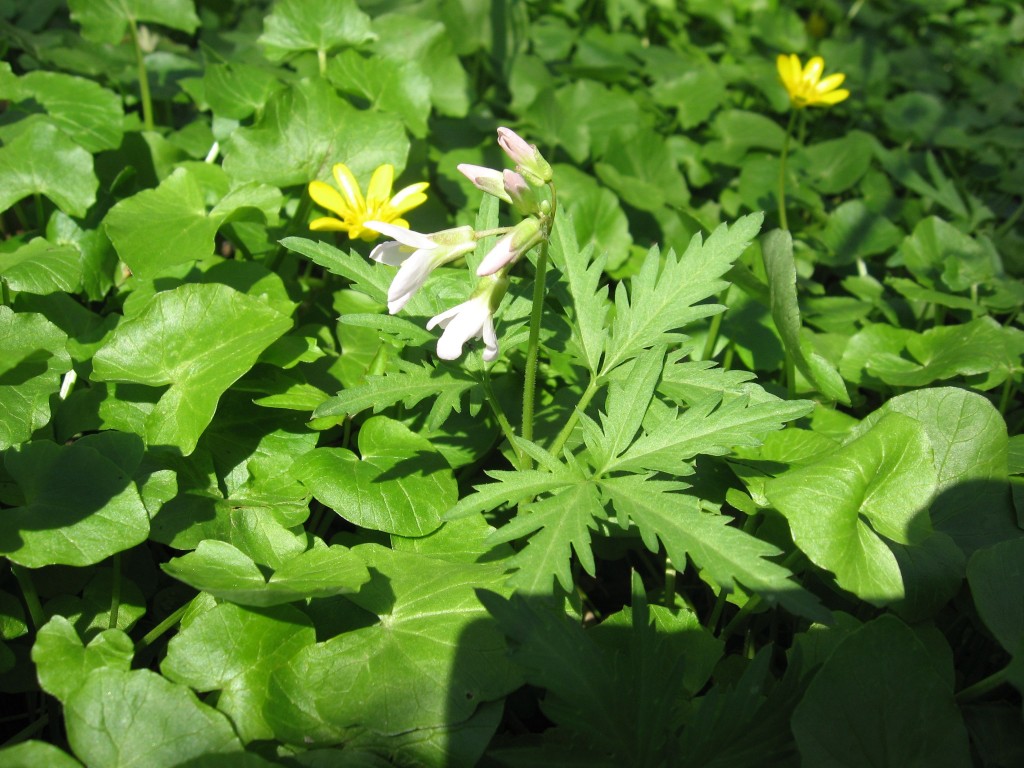
An invasion of the invasive exotic Runuculus ficaria has us wondering what other flowers were prevalent here at one time. This cut-leaved toothwort was the only specimen we found. Â (This is the spring wildflower that host the west Virginia White butterfly larvae, which often mistakes the invasive Garlic mustard flower for this flower. Â The Butterflies eggs mistakenly layed in the Garlic Mustard are poisoned.)
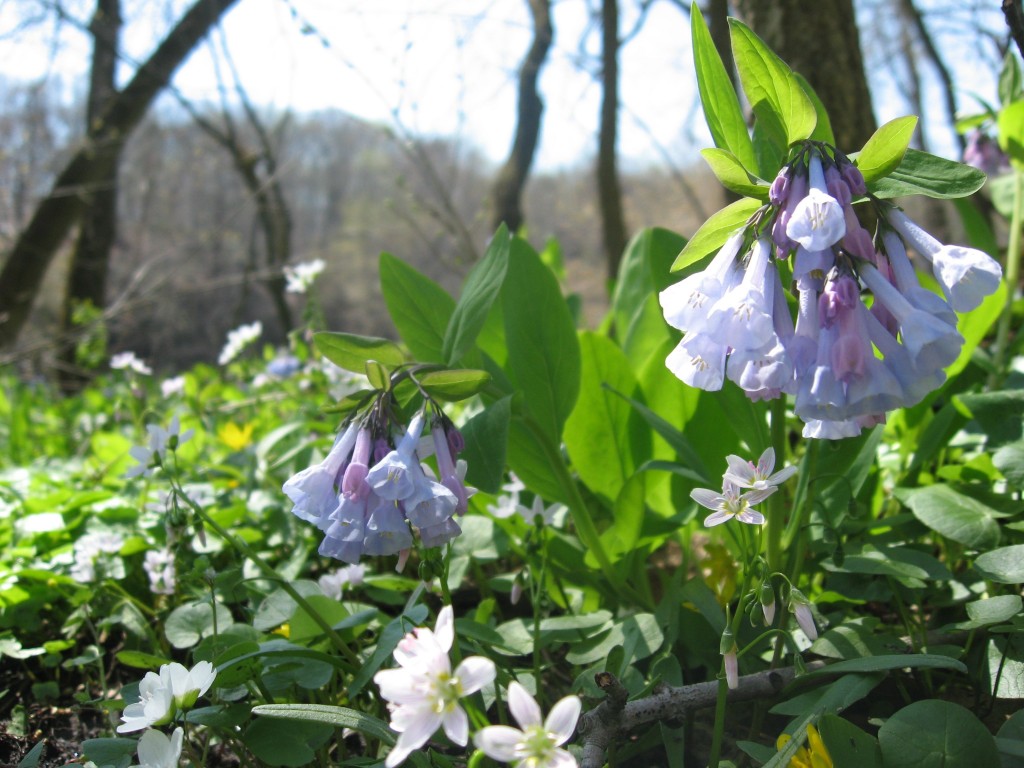
There were many colonies of Claytonia virginica (Spring Beauty) to be found growing among the Bluebells. Â This native flower grows out of corm , which is sort of like a bulb but has a root-like appearance about it. Â One of our neighbors had them growing on their lawn. Â When we informed them they had a great native wildflower growing on their lawn, they said they thought it to be a weed. Â They said they were going to rip up the whole lawn and re-do it, so in their generosity, told us we could rescue the Spring Beauties if we wanted. It is not the optimal time to transplant them, being that they are in flower, it is either that or a total loss of the plants. The transplanting operation was insightful in understanding the habit of the plant. An oddly shaped, wrinkled and leathery corm with many rootlets, with many extremely delicate shoots of leaves and flowers that extend out from the soil and leaf litter. Â There were some casualties in the operation.
Nonetheless, one persons weed is another person’s garden specimen.
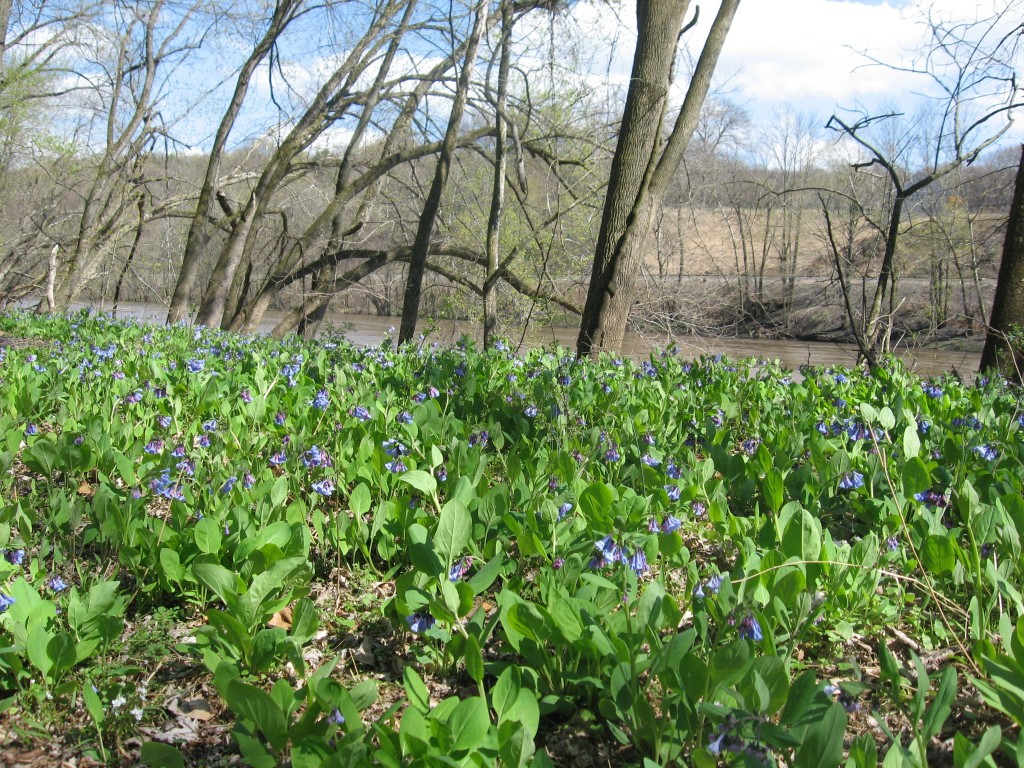
Possibly somewhere somebody considers Bluebells a weed. Â If they were exported to another ecosystem, out of their natural range, where there were no checks and balances, they could explode into a menacing invasive and take over, crowding out the native species of that area. Then the bluebells wouldn’t be so pretty. They would not be supporting the native wildlife in this imagined area, because the wildlife is dependent upon species it has evolved with, for food, for reproductive symbiosis, just basic habitat. Â In this scenario, the exported bluebell could lead to species extinction. Â The lesson from all of this is, before you plant a bluebell in your yard, try to find out if your yard is within this plant’s natural range.
For gardeners who love flowers and plants and have never heard of these ideas presented in this way, some of these concepts can be difficult to accept.  The folks at the Sanguine Root office are in no position to pass judgement, present our case as a righteous cause  in a didactic fervor,  or to sound preachy or superior. We take these concepts with a heavy heart and a mind towards science and reason. Species extinction is a serious matter, and we need to know the causes.  We do know that habitat loss is a cause of species extinction.  We also know that invasive, exotic species can create conditions of habitat depletion, deterioration and population extirpation. The extirpation of a species in a given area where it has existed for thousands or millions of years is a sign that this species is on a path of complete extinction from our planet forever. Extinction  is a frightening concept, because it  is a death that is even worse than death. There is no consolation, or religious conviction for extinction. There  is nothing poetic, there is no continuity, there is no connection, extinction is the last thing we want, it is more than a warning, it is a reality immediately happening.
We never know when a species that is introduced into an area outside its native range will suddenly become invasive.  Japanese Honeysuckle was introduced in the first decade of the 1800s. It was not reported as a problematic plant until the 1890s.  Now it is an invasive of epic proportions.  The idea that an imported plant can exist as an innocuous ornamental for decades and be widely planted  and admired and then suddenly ‘jumps the fence’ and becomes a noxious invasive is an alarming notion, yet it is the reality.  We will never know what plant will become the next invasive, often until it is too late.  Right now there is a Crepe Myrtle craze sweeping the eastern seaboard,making its way northward.  They are beautiful plants that have long periods of flowering and bring joy to many a homeowner (and landscape professional).  For now they are innocuous and have not become invasive.  However, they are an introduction to our area.  Knowing what we know about introduced species, the Crepe Myrtle, is a gamble. What will be the status of Crepe Myrtle in 100 years in America? Just an innocuous and pretty, well behaved landscape plant beautifying roadsides and yards? Just remember, our pretty landscape specimen is a sexual being, creating and throwing out  fertile seeds, often picked up and dispersed by birds.
The bottom line of this difficult meditation on this tough issue: Â What is the long term impact of our planting choices? What do we really know about what we are planting in our yards? Â Is the nursery industry really concerned about these impacts? We want a pretty flower for our yards that will bring us happiness, improve our properties, in both real value and the value we personally attribute for our own well-being. The Sanguine Root vegetable garden has tulips (not native) out front, which we enjoy and brings happiness to the neighborhood. Â The tulips are bringing real value to the garden property, in contrast to the discarded diapers , beer bottles, and plastic bags that covered this West Philadelphia vacant lot in 2006.
We have nothing more to discuss about this issue for the moment, because we want to enjoy our lunch on this beautiful Sunday afternoon with the Bluebells, but we welcome your comments. Please, what do you think of these ideas and assertions?
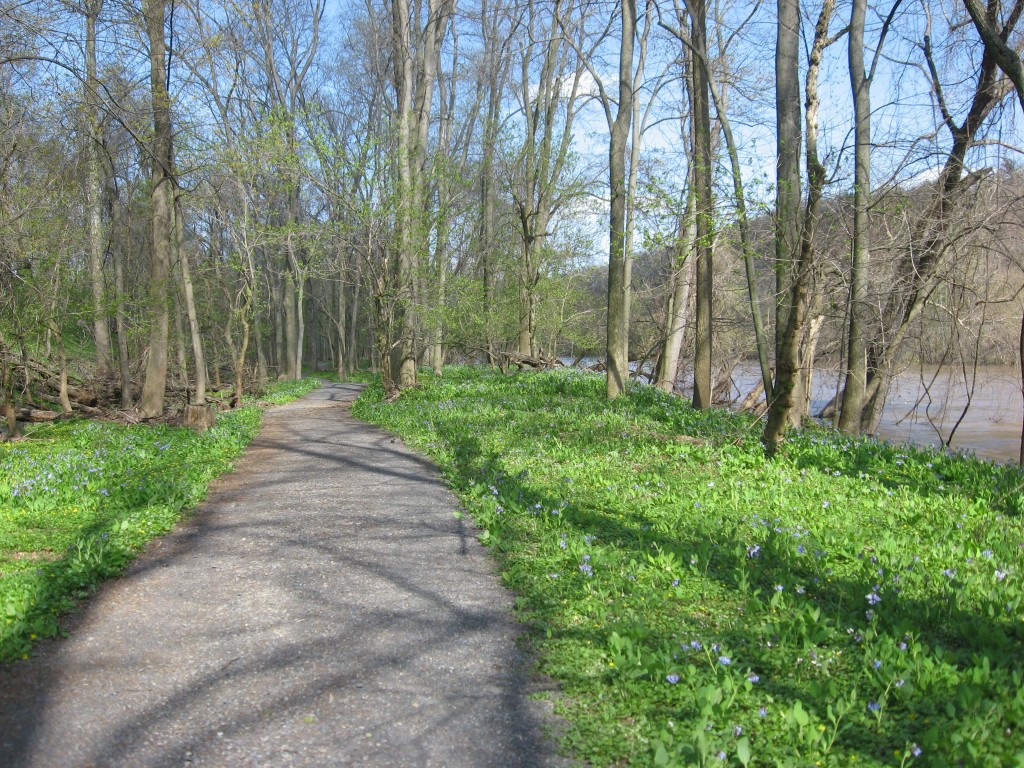
Seeing the beautiful bluebells growing naturally on this floodplain of our drinking water source, the lovely Schuylkill River, is a happy afternoon for us at the Sanguine Root. On this Sunday, we could hear the river flowing and see the Bluebells in flower, the Sycamore trees leafing out, the Silver and Sugar Maples blooming and setting seed.
It has been a great past 5 years for us, as we have been learning a great deal about the natural environment around us. Every native species is a new world, and we see it growing all over. And with the invasive species as well, we learn about them, study them, and then in some cases we eradicate them from a targeted area. Â The learning experience is ever ongoing and it is full of ups and downs. Â The more we learn about native plants fills us with joy and we are fascinated about the world of plants that is right at our front door and has been there for thousands and millions of years. Â Then we learn about the invasives, of which many are also beautiful plants, and we see their habits, and we are forced to think about this whole concept of some plants being appropriate (native) and some being inappropriate, the invasive (or introduced). Â What we learn makes us so happy and gives us a sense of meaning, and when we learn that something is off-kilter or problematic we are then faced with the ultimate question, that the plants that are out of balance can potentially destroy the habitats of the plants that are naturally occurring as well as all the species dependent on these plants. Â Here in the Bluebell Place we sit on the bench and eat our lunch as the Schuylkill River rushes past us in a mesmerizing way.
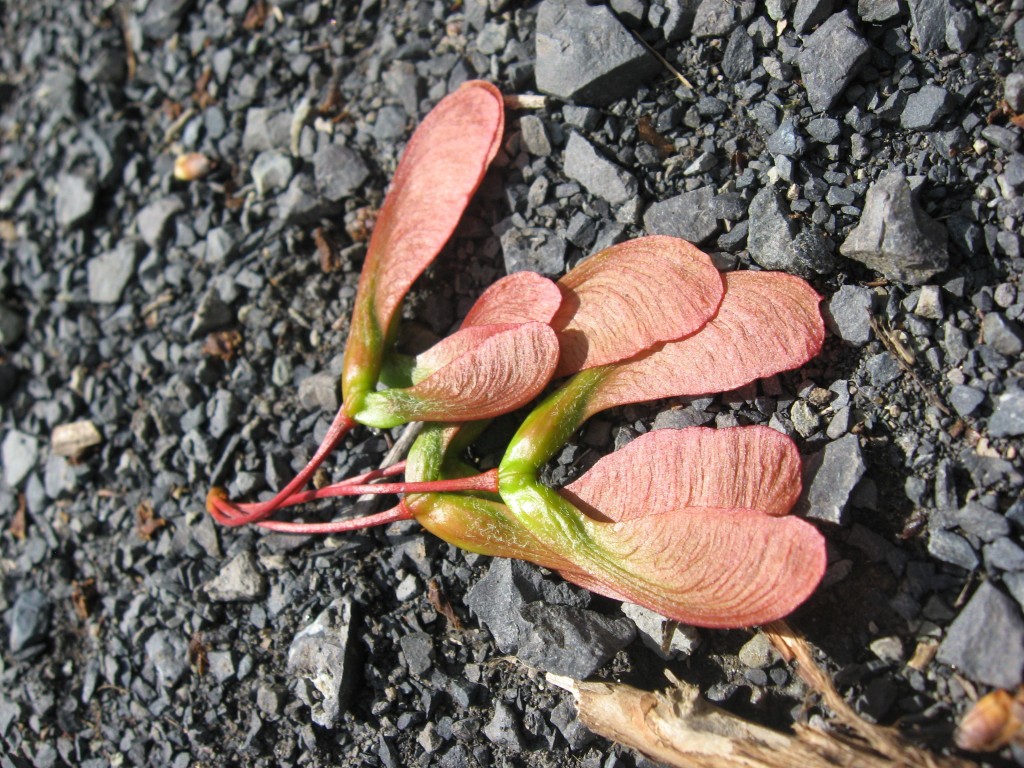
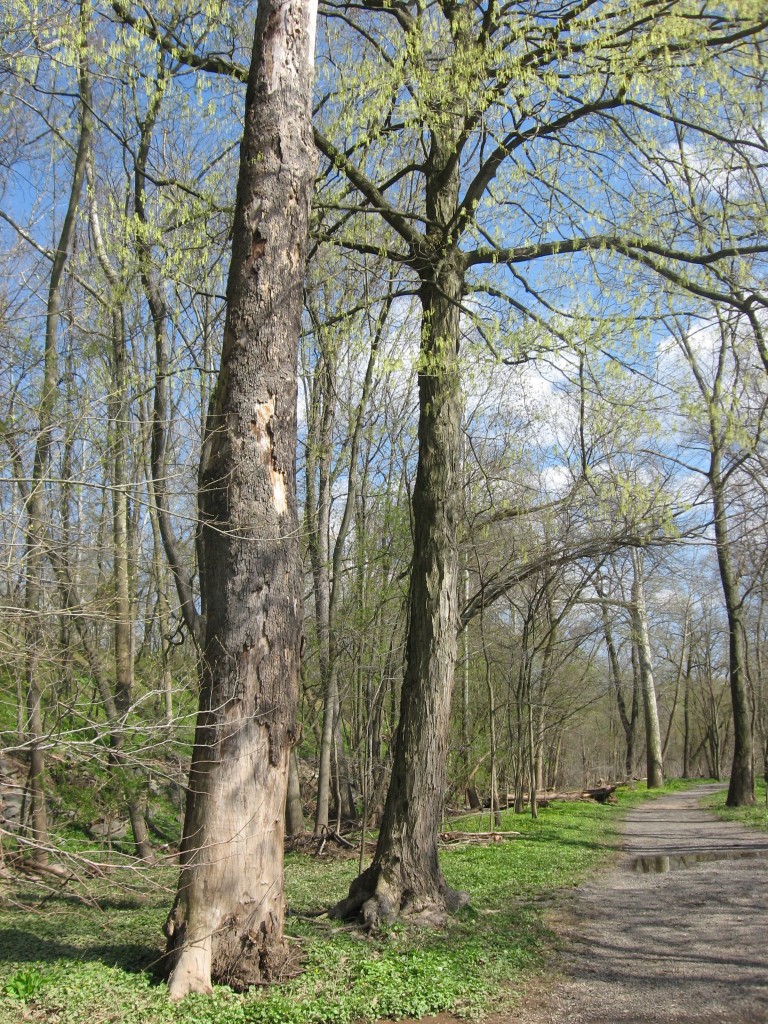
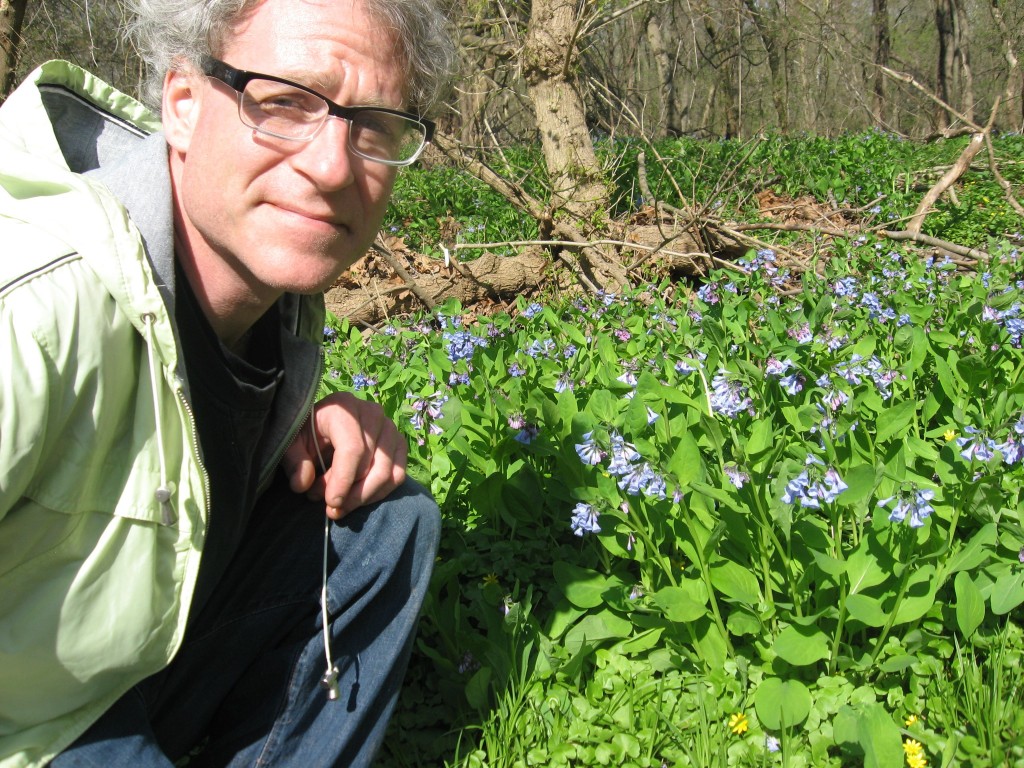
Welcome to the springtime.



